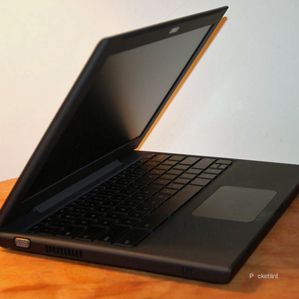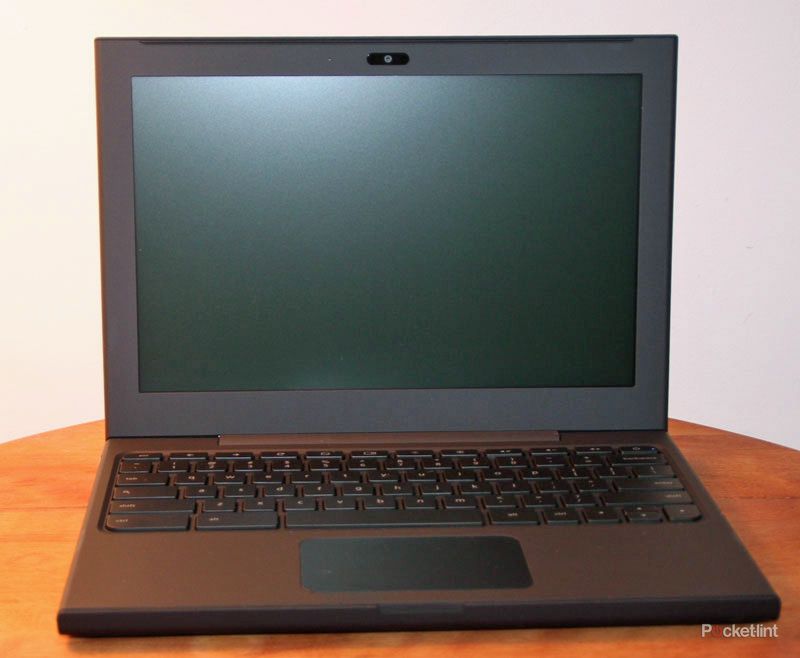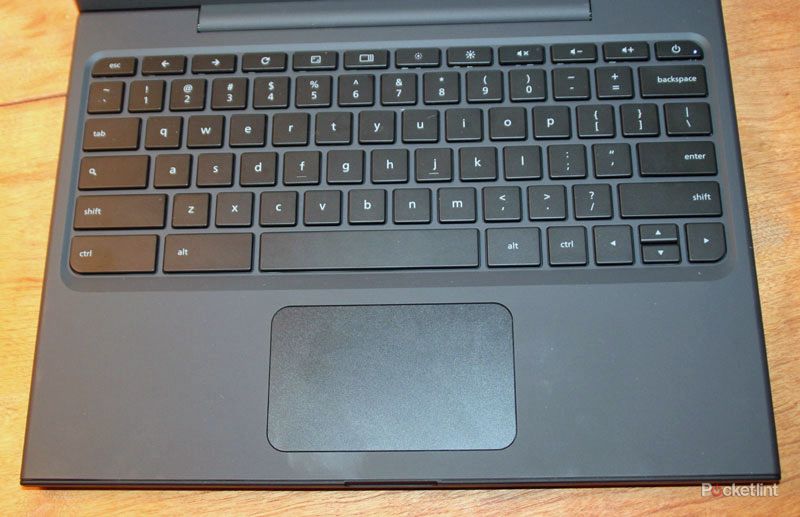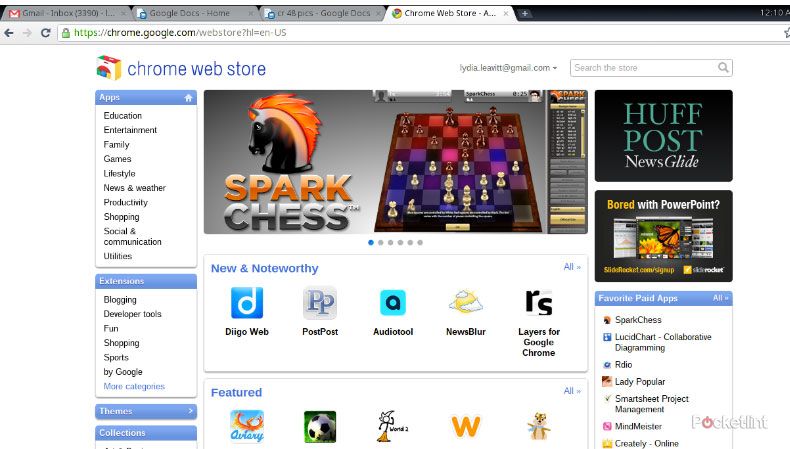Chrome operated notebooks aren’t available for purchase yet but Pocket-lint was lucky enough to get our hands on the unbranded Chrome OS test notebook before the real deal hits store shelves in mid-2011. The Cr-48 is Google’s test notebook running on the cloud-based Chrome operating system with special features like super fast boot speeds and almost instant internet connectivity.
Our quick take
Clearly, the Cr-48 is a simplified version of a full power laptop, designed for portability and connectivity. But when it comes down to getting things done, is the Cr-48 a viable option? Yes and no. If you’re a user with the desire to quickly hop online using 3G or Wi-Fi in order to consume content and send out a few emails, then the Cr-48 is an excellent choice. It faces the same challenges that the original run of Linux netbooks did, but the Google factor may just pull it through.
The Cr-48 faces many of the same challenges that tablets do as far as getting things done. Since it’s completely app based, it’s rather limited in the number of things you can actually do much like a tablet. But as this notebook has a keyboard, it’s arguably more productive than a tablet. Overall, it’s a good notebook for someone on the go who values things like long battery life, fast connectivity, and quick surfing. It’s a consumption machine, not a productivity machine.
No word yet on when exactly the Cr-48 will be released in the US or UK or how much it will actually cost.

First Look
| FOR | AGAINST |
|---|---|
|
|
The Cr-48 isn’t a full power laptop, it’s a notebook designed for fast connectivity and easy consumption or sharing with built-in 3G and Wi-Fi. This notebook is all about battery life, the cloud, and sharing, rather than high powered computing.
Although the sleek rubberised black 12.1-inch notebook’s design could stand up to most competitors, the design is simply a prototype and won’t be available to the masses ever. Not now, not soon, not ever. On the current design, the screen display is 1280 x 800 and has a built-in webcam, which requires a fair amount of light to avoid a dark image.
The prototype hardware has no optical drive and only a single USB 2.0 port, VGA output, full-sized SD card reader, and a headphone jack. 802.11a/b/g/n Wi-Fi and CDMA 3G connectivity live inside the machine with 3G powered by Verizon. When the finalised version becomes available, Verizon is said to be offering 100MB of 3G data included per month for the first 24-months with future plans costing around $20 for 1GB a month, $35 for 3GB or $50 for 5GB.
Excited to use the machine and test the 8 hour battery and 8 day standby, Pocket-lint chose a table at Starbucks with no power outlet in sight. The first test of the Cr-48 is cold starting the machine, which Google claims is lightning fast. From pressing the power key, to connecting to the coffee shop’s wireless network, signing into Gmail, and snapping a quick avatar photo, it all took under a minute. Impressive Google, but we’re not done with you yet.
The Cr-48 stands in stark contrast to standard laptops that take ages to power up and start working. Even when popping in and out of sleep mode the Cr-48 is fast, waking up from sleep mode in what Google says is around 1.12 seconds. To put the notebook to sleep, you simply close the lid. Close the lid, open the lid, and you’re ready to work. After the initial set-up, it takes around 15 seconds to cold start.
The upper right corner of the screen houses the traditional system clock, wireless bars, and battery indicator, which normally live in the bottom right corner of a Windows computer. You can switch networks or check your internet connectivity from the drop down using the touchpad.
Google takes a minimalist approach to the Cr-48’s keyboard, completely eliminating certain keys like the F function keys and the beloved CAPS LOCK. But instead of caps, you get a super handy search key for fast Google searches with no touchpad navigation required.
You’ll also notice there’s no task bar or start menu either. The notebook doesn’t have a desktop set-up in the traditional sense of the word but rather brings up a Chrome browser from the moment you turn on the machine. You’ll see a list of pre-installed web apps and two menus: Most Visited and Recently Closed sites, much like the current version of Chrome for PC. Preloaded web apps include Getting Started instructions, Entanglement puzzle game, Poppit game, Gmail, YouTube, Google Maps, Google Talk, and the Google Chrome App Store for more apps.
Everything you do on the Cr-48 lives in the cloud, rather than in the notebook’s memory, which helps the computer stay fast without a traditional operating system. Think of it as computing lite, where everything you need lives in the cloud or in the Google Chrome App Store.
As far as multitasking goes, the user is limited to using multiple tabs rather than multiple windows. These tabs can’t be minimised or maximised for a different view. Since you can’t minimise the tabs, there is also no task bar but users can switch between Chrome windows using Alt-Tab. Pop-up windows still exist and are the only exception to the tab-only browsing system. You still can’t minimise pop-ups but you can move them left and right or to the bottom of the display screen.
If you find yourself going to the same websites over and over again, you may want to pin your tabs for organisation purposes. Without pinned tabs that open up particular apps when you first start your machine, you may find yourself looking through your tabs for exactly what you’re looking for. One cool but somewhat distracting feature is the Gmail IM pop-up on any screen you’re surfing, rather than relegating chat to your Gmail tab. Indeed, it’s a great computer for connectivity, chat, and surfing.
A major barrier to use is the lack of media saving protocol on the Cr-48. The notebook only has 16GB of SSD memory and 2GB of RAM, and due to limited space there is no protocol for saving large numbers of photos or videos locally. In order to upload pictures or video to your Cr-48, you are forced to rely on internet connectivity for uploading to an existing Google app like Picasa. The Cr-48 will sync with most cameras but sadly not with devices like iPods or other media devices because no apps like iTunes or DoubleTwist exist in the App Store.
For basic tasks, performance is fast, even though the Cr-48 has a single-core Atom N450 processor. It only becomes a problem when you try to run Flash-based video or higher bitrate videos on YouTube or Vimeo due to lagging and choppiness. Besides that annoyance, some sites simply don’t work in Chrome, suggesting you use Internet Explorer or Firefox. On the Cr-48 you cannot physically open another browser so you’ll have to live without sites like Netflix, for example.
As previously mentioned, the machine simply does not have enough power for high level computing tasks like video rendering. On the upside, without a standard OS that bogs the computer down, the lack of core files makes the Cr-48 very hard to corrupt with malware or a virus. The downside? Cloud computing is not impenetrable, although Google uses “defense in depth” to make it harder for hackers to fully penetrate its systems.
To recap
It’s a consumption machine, not a productivity machine



